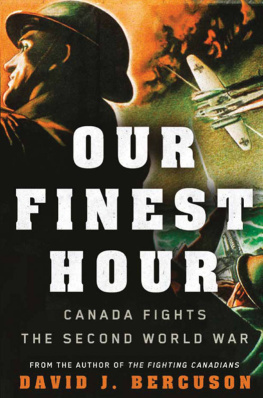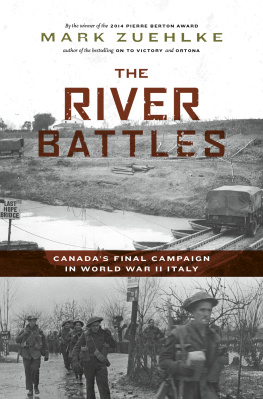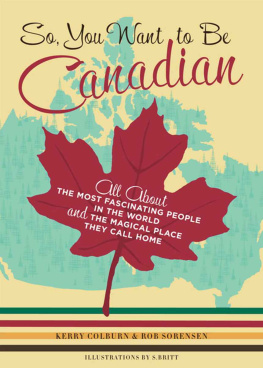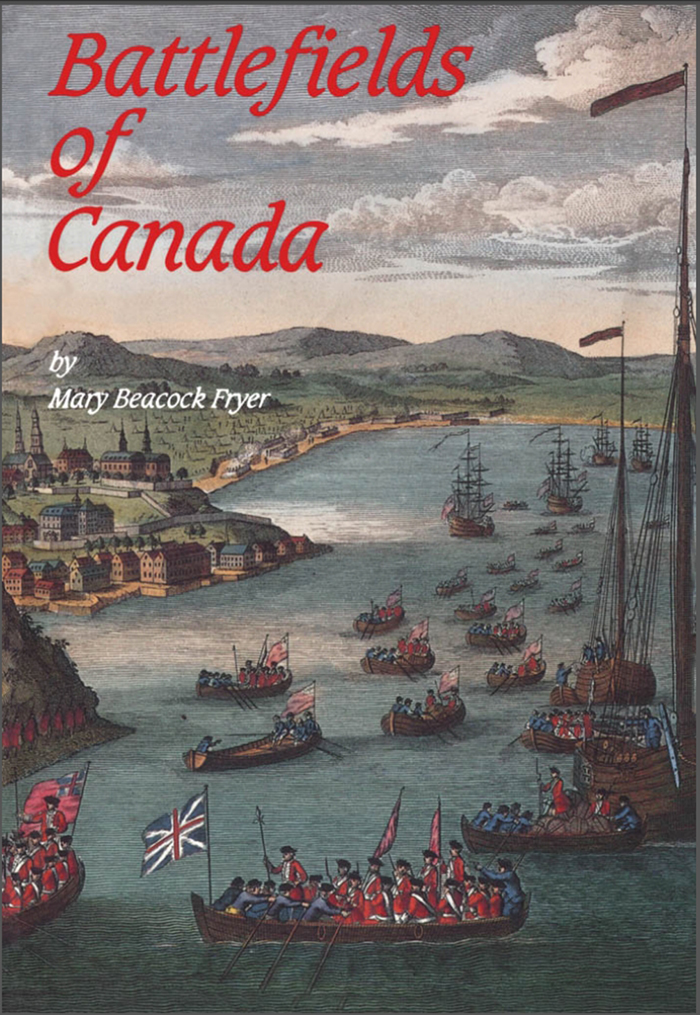Battlefields of Canada
Mary Beacock Fryer
Toronto and Reading
Dundurn Press
1986
Copyright Dundurn Press Limited, 1986 All rights reserved. No part of this publication may be reproduced, stored in a retrieval system, or transmitted in any form or by any means, electronic, mechanical, photocopying, recording, or otherwise (except brief passages for purposes of review) without the prior permission of Dundurn Press Limited.
Design and Production: Andy Tong
Typesetting: Typografix Inc.
Printing and Binding: Hignell Printing Limited, Winnipeg, Canada
The writing of this manuscript and the publication of this book were made possible by support from several sources. The publisher wishes to acknowledge the generous assistance and ongoing support of The Canada Council and The Ontario Arts Council.
Care has been taken to trace the ownership of copyright material used in the text (including the illustrations). The author and publisher welcome any information enabling them to rectify any reference or credit in subsequent editions.
J. Kirk Howard, Publisher
Canadian Cataloguing in Publication Data
Fryer, Mary Beacock, 1929
Battlefields of Canada
Bibliography: p.
Includes index.
ISBN 1-55002-007-2
1. Battlefields - Canada. 2. Battles - Canada.
3. Canada - History, Military. I. Title.
FC226.F79 1986 971 C86-094666-5
F1028.F76 1986
Second Printing: February 1995
Dundurn Press Limited
2181 Queen Street East
Suite 301
Toronto, Canada
M4E 1E5
Dundurn Distribution
73 Lime Walk
Headington, Oxford
England
0X3 7AD
Dundurn Press Limited
1823 Maryland Avenue
P.O. Box 1000
Niagara Falls, N.Y.
U.S.A. 14302-1000
Battlefields of Canada
Mary Beacock Fryer
CONTENTS
Acknowledgements
The author and publisher wish to thank the following for their informed comments on various chapters: Mrs Ann Boyer, Curator, Battlefield House, Stoney Creek, Ontario; Mr James Candow, Parks Canada, Signal Kill National Park; Mr Dennis Carter-Edwards, Research Historian, Ontario Region, Parks Canada; Mr D.J. Delaney, Area Superintendent, Fort Wellington National Historic Park, Prescott, Ontario; Mr. Michel Filteau, P.H.N. Les fortifications de Quebec, ville de Quebec, Quebec; Mr Daniel J. Glenney and Mr Walter Haldorson, Niagara National Historic Parks, Niagara-on-the-Lake, Ontario; Mme. Michelle Guitard, historian, ville de Quebec, Quebec; Mr Willian Naftel, Acting Chief, Historical Resources Research, Parks Canada, Atlantic Region, Halifax, Nova Scotia; Mr S.C. Ridlington, Area Interpretation Officer, Fort Beausjour, National Historic Park, Aulac, New Brunswick; Ms Barbara Schmeisser, Project Historian, Fort Beausjour National Historic Park, Aulac, New Brunswick; Mrs Elinor Kyte Senior, historian, Montreal, Quebec; Dr Hereward Senior, historian, Montreal, Quebec; Captain C.H. Shaw (N) Retd, Director, Maritime Museum of British Columbia, Victoria, British Columbia. In addition we wish to thank Dr. W.A.B. Douglas, Directorate of History, Department of National Defence; Fred Gaffen, Canadian War Museum; Terence B. Smythe, Historical Research Division, National Historic Parks and Sites, Parks Canada, and Rex Williams, Cariad, whose idea this book was; and Barbara Fryer, who helped with the proofreading.
Introduction
The Oxford Dictionary defines a battle as a fight, especially between large forces. By that judgement, Canada has only four real battlefields Louisbourg in 1745 and 1758, Quebec because of the battles fought there in 1759 and 1760, the Richelieu River-Lake Champlain corridor from the era of New France until 1813, and the Niagara peninsula in 1812-1814. Most of the serious battles were fought in these places. The fights that occurred in the rest of the country were hardly more than skirmishes, defined in the Dictionary as irregular or unpremeditated fighting, especially between small or outlying parties, or as small engagements. At the same time, a skirmish fulfilled another criterion for a battle, that of resistance. Without opposition an attack was really a raid, or surprise predatory incursion. If Canada is short of battlefields, especially in the west, there is no dearth of skirmishes or raids.
The battlefields included in this book have been selected for various reasons importance, scale, special features, comic or bizarre aspects, historical epoch, or regional distribution. Describing in this book battlefields exclusively from Nova Scotia, Quebec and Ontario would have restricted both scope and interest. Alberta is lucky in having only one site Frenchmans Butte, which in 1885 was the setting for what really amounted to a skirmish. Prince Edward Island has no battlefield, but certain raids were a consequences of its link to Louisbourg.
Other criteria for selection were accessibility and state of preservation. Where a battlefield has been set aside as a national or provincial historic site, there is something to see, something resembling the location at the time of the battle. In other instances the site has been so altered that it is no longer possible to see what actually happened. Lundys Lane on the Niagara peninsula, for example, was the site of a bloody, sustained, indecisive battle in 1814, but the site has been built upon and the scene is difficult to envisage. Queenston Heights, in the same area, is a public park, preserved as open space, where a visitor can easily see what happened. One battlefield left out, with regret, is the Long Sault of the Ottawa River, where Dollard des Ormeaux made his stand against the Iroquois. Historians and archaeologists can not agree on the location of the site.
Not all battlefields selected are historic sites. One setting that invites exploration is that of the Battle of the Thousand Islands, fought in 1760. Tracing the events involves locations, both public and private, in both Ontario and New York State which can be visited by boat. And this battle site is not the only instance where the present boundary between Canada and United States has been ignored in the selection of the following battlefields. Many sites not in Canada are the setting for battles that affected this country. One such is Carillon-Ticonderoga. This site was of such strategic importance that, although in New York State, it has been included in this collection.
A chronology in the appendix provides a more complete record of all the disturbances that have taken place in Canada from the arrival of the first Europeans, and it also pinpoints some sites where native peoples fought battles that did not involve Europeans. This list fills in the gaps inevitably made by the selection of 16 battlefields, and helps place these battles in their wider context.
Early Exploration and Settlement

Champlains battle against the Iroquois near Ticonderoga in 1609. Behind the French officer are his Huron and Algonquin allies.
The story of the first Europeans in central Canada is the story of the struggle to control the fur trade. To any European furs were a great bargain. Although some items exchanged for furs were useful, such as knives, axes, kettles and cloth, many were cheap trinkets, or liquor, which did unpardonable harm to native people unaccustomed to it. The European appetite for furs was insatiable, and the quest to find new areas where animals were plentiful led to the exploration of more and more of the interior.









